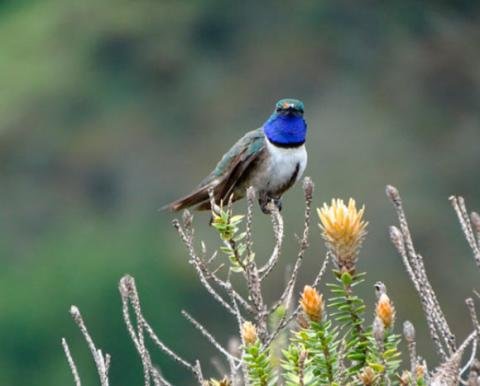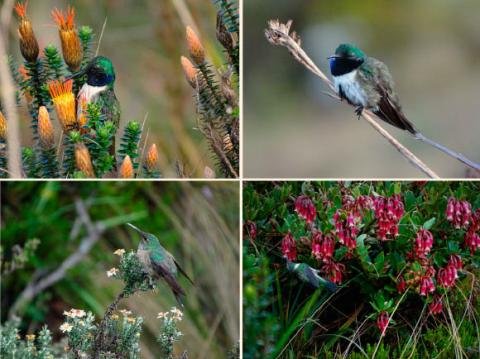New Hummingbird Species Discovered in Ecuador
A new species of hummingbird, called the blue-throated hillstar (Oreotrochilus cyanolaemus), has been discovered in the southwestern Andes of Ecuador by an international team of ornithologists.

Hillstars are hummingbirds of the genus Oreotrochilus. These birds are approximately 5 inches (13 cm) in length with fairly long, slightly decurved bills.
They are unusual among hummingbirds — they live in high-elevation habitats in the Andes and have special adaptations to cold temperatures.
Dr. Francisco Sornoza-Molina of the Instituto Nacional de Biodiversida in Quito, Ecuador, and colleagues first observed and photographed a previously unknown hillstar during fieldwork in the southwestern highlands of Ecuador — an area historically poorly explored by ornithologists — in April 2017.
After the first expedition, the team returned in May to capture several specimens and confirm the finding.
“The hillstar hummingbirds occur in the most rugged, isolated, and inaccessible parts of the Andes, where they roost in caves, forage on the ground, and spend half their lives in hypothermic torpor, so the discovery of a new species in this group is incredibly exciting,” said hummingbird expert Dr. Christopher Witt, a researcher at the University of New Mexico, who was not involved in the study.
“This striking discovery confirms that life in the high Andes still holds many secrets to be revealed.”

The new species is found only along bush-lined creeks in an area of about 114 km2.
“The distributional range of the blue-throated hillstar, as currently known, is confined to small ridges not surpassing 3,700 m, both on east- and west-facing slopes and upper ridges of the west Andean cordillera,” Dr. Sornoza-Molina and co-authors said.
“It is limited by the Jubones-León river valley to the north and northeast, respectively, and by the lower Andes of the Puyango-Catamayo drainages to the south.”

The scientists estimate there are no more than 750 individuals. Threats to its habitat include fire, grazing, and gold mining, and it meets the criteria to be considered critically endangered.
“The fate of this species is likely critical, with no land protection and no conservation measures known to us,” they said.
“Even though population numbers are not known, we suggest a very small population (at best, 250–750 individuals, but possibly below 500 individuals) inferred from numbers of male birds and territorial females observed in the field, and limited suitable feeding and nesting habitat along a small range.”
“Complete support from national and international conservation agencies is needed in order to save this species. The action plan for the conservation of this bird is creating a network of protected areas along its geographic range,” Dr. Sornoza-Molina said.
The discovery is reported September 26, 2018 in The Auk.
Francisco Sornoza-Molina et al. 2018. A striking, critically endangered, new species of hillstar (Trochilidae: Oreotrochilus) from the southwestern Andes of Ecuador. The Auk 135 (4): 1146-1171; doi: 10.1642/AUK-18-58.1
@faisalali734, I gave you a vote!
If you follow me, I will also follow you in return!